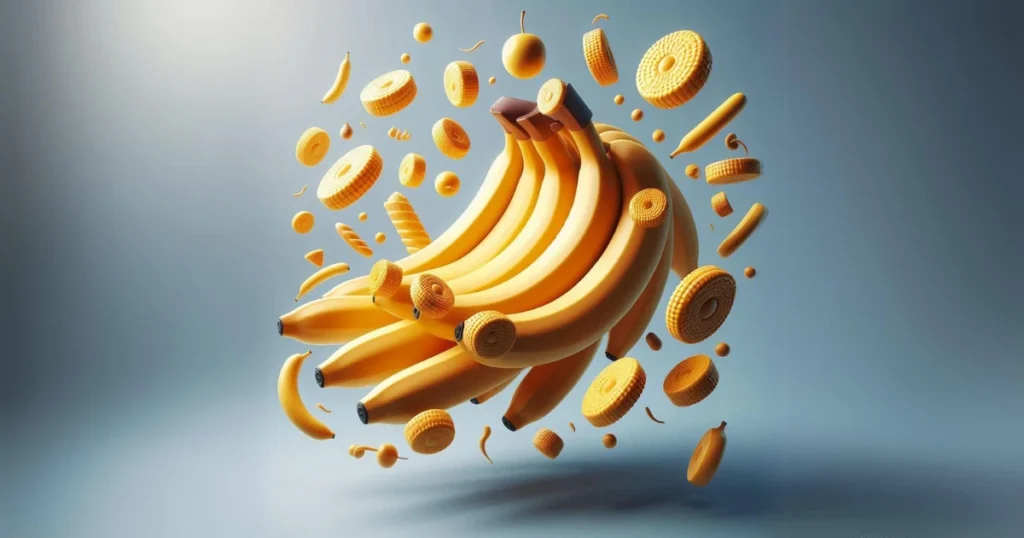
Bananas are a beloved fruit worldwide, known for their versatility, nutritional value, and delicious taste. While the common Cavendish variety is the most recognized, there are numerous unique types of bananas that offer distinct flavors, textures, and uses. In this article, we will explore 10 exceptional types of bananas that you might not know about, providing detailed insights into their characteristics and culinary applications.
Benefits of bananas
Bananas are beneficial for you in many ways. This well-known yellow fruit has a lot of potassium and magnesium, which your body needs to keep fluid and pH levels stable, as well as for nerve and muscle activity.
As they get older, their starches turn into sugar. You can get different kinds of healthy starch from bananas if you eat them before they’re fully ripe.
Their rapidly digestible starch turns into glucose, which your body can use for a quick energy boost. On the other hand, slowly digestible starch gives you energy that lasts longer and helps keep your blood sugar levels steady.
Your big intestine breaks down the resistant starch in bananas, feeding good bacteria.
This tasty fruit also has antioxidants, such as phenolic substances and carotenoids, that may protect your cells from oxidative damage.
There is also a lot of serotonin, dopamine, and adrenaline in bananas. These chemicals help keep your mood, blood pressure, and heart rate in check.
Nutrition facts
Some of the good things for you are in 3.5 ounces (100 grams) of both ripe and raw bananas.
| Dessert bananas | Cooking bananas (plantains) | |
| Calories | 89 | 122 |
| Protein | 1 gram | 1 gram |
| Carbs | 23 grams | 32 grams |
| Fiber | 2 grams | 3 grams |
| Fat | less than 1 gram | less than 1 gram |
| Vitamin B6 | 18% of the Daily Value (DV) | 15% of the DV |
| Vitamin C | 15% of the DV | 31% of the DV |
| Provitamin A | 1% of the DV | 23% of the DV |
| Potassium | 10% of the DV | 14% of the DV |
| Magnesium | 7% of the DV | 9% of the DV |
Some of the beneficial things for you are in 3.5 ounces (100 grams) of both ripe and raw bananas.It is true that cooked bananas have more calories, carbs, and vitamin C than raw bananas. Most of the other chemicals are about the same between the two types.
Types of Bananas
1. Cavendish Banana
The Cavendish banana is the most widely consumed type of banana in the world. Known for its sweet flavor and soft texture, this variety is a staple in many households. People typically eat it raw, add it to cereals, or use it in baking recipes like banana bread and muffins.
Characteristics
- Size: medium to large
- Color: yellow when ripe, green when unripe
- Texture: soft and creamy
- When unripe, it is sweet with a slight tartness.
2. Plant a banana
Plantains are a type of banana that is starchy rather than sweet, making them ideal for cooking. Tropical regions often use them as a staple in savory dishes.
Characteristics
- Size: Large
- Color: green, yellow, or black, depending on ripeness.
- Texture: Firm when unripe, softens when cooked
- Taste: starchy and bland when unripe, slightly sweet when ripe.
Culinary Uses
- Unripe: Fried to produce plantain chips or tostones.
- Ripe: baked, boiled, or fried
3. Red Banana
Red bananas are shorter and plumper than Cavendish bananas, with a distinctive reddish-purple skin. They are sweeter and softer, with a slight raspberry flavor.
Characteristics
- Size: Medium
- Skin color: reddish-purple
- Texture: Creamy
- Taste: sweet, with berry-like undertones.
Culinary Uses
- Eaten raw as a snack
- Used in desserts and smoothies
4. Blue Java Banana
The Blue Java Banana, also known as the Ice Cream Banana, is renowned for its blueish skin and vanilla ice cream-like flavor.
Characteristics
- Size: Medium
- Color: bluish skin when unripe, silver-green when ripe.
- Texture: creamy, almost custard-like
- Taste: sweet, with a hint of vanilla.
Culinary Uses
- Eaten raw
- Used in desserts, smoothies, and dairy-free ice cream alternatives
5. Lady Finger Banana
Lady Finger bananas, also known as sugar bananas, are smaller and sweeter than Cavendish bananas. People often enjoy them as a snack or in fruit salads.
Characteristics
- Size: Small
- Color: Yellow
- Texture: firm and creamy
- Taste: Very sweet
Culinary Uses
- Eaten raw
- Perfect for fruit salads and snacks
6. Burro Banana
The Burro banana has a unique shape with squared-off ends. It has a tangy lemon flavor when ripe and is versatile in both sweet and savory dishes.
Characteristics
- Size: Medium
- Color: yellow with green tinges
- Texture: Firm
- Taste: Tangy, with a hint of lemon.
Culinary Uses
- Eaten raw
- Cooked in both sweet and savory dishes.
7. Manzano Banana
The Manzano banana, or apple banana, is known for its apple-like flavor. It’s shorter and stubbier than Cavendish bananas.
Characteristics
- Size: Small
- Color: Yellow
- Texture: Firm
- Taste: sweet, with an apple-like flavor
Culinary Uses
- Eaten raw
- Used in fruit salads and desserts
8. Goldfinger Banana
The Goldfinger banana is a hybrid variety known for its disease resistance and rich flavor. It is similar in taste to the Cavendish, but with a hint of apple and strawberry.
Characteristics
- Size: Medium
- Color: Yellow
- Texture: Firm
- Taste: Sugary, with notes of apple and strawberry.
Culinary Uses
- Eaten raw
- Used in baked goods and smoothies
9. Gros Michel Banana
The Gros Michel banana was the primary commercial banana before the Cavendish took over. It has a richer, creamier taste and is still popular in some regions.
Characteristics
- Size: Large
- Color: Yellow
- Texture: Creamy
- Taste: rich and sweet
Culinary Uses
- Eaten raw
- Used in desserts and baking
10. Praying Hands Banana
The Praying Hands banana is named for its unique bunch formation, which resembles hands in prayer. It has a mild flavor and is versatile for culinary uses.
Characteristics
- Size: Large
- Color: Yellow
- Texture: Firm
- Taste: mild and sweet
Culinary Uses
- Eaten raw
- Used in both sweet and savory dishes
How to ripen and store bananas
We pick bananas for dessert when they are about 75% ripe but still green. Before they reach the shop, ethylene gas, a natural ripening agent, usually treats them. It’s best to leave them out on the table at home and let them ripen.
If you put almost-ripe bananas in the fridge, they will take longer to ripen. The fruit will stay fresh for a few days, even though the skin will turn black. Adding a ripe apple to a brown paper bag will help them ripen faster.
You can also peel grown bananas and freeze them to use in smoothies, banana bread, or ice cream without milk.
The bottom line
Bananas can be eaten as a sweet snack or a spicy side dish. You can put them into two groups: sweet bananas and cooking bananas, which you may also call plantains.
There are over 1,000 different kinds, so it’s a beneficial idea to look for different ones, especially if you’re going somewhere warm.


